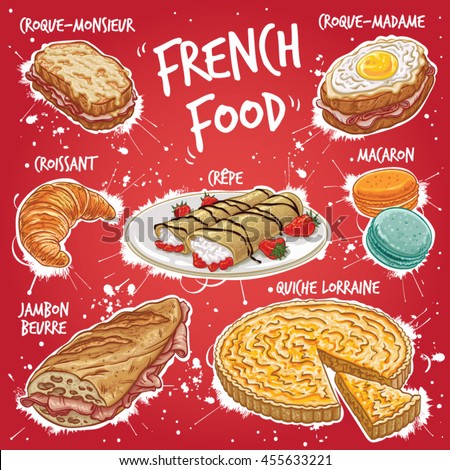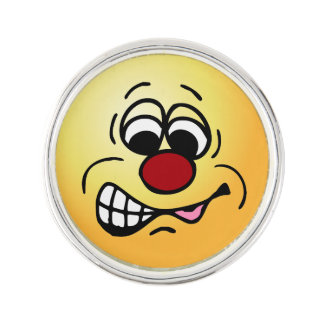As a new speaker of French I am, of course, making lots of mistakes.
Grammar mistakes are one thing. They are important but not as critical as pronunciation or use of the wrong word because they can cause confusion or offense when you don't intend it.
Below are some examples of my goofs and gaffes in French over the past month. I'm sure this will be a regular blog post.
brie -- bruit
 One of our neighbors was getting his hedge trimmed in the morning and the noise had gone on for 3.5 hours. I commented: "Il y avait beaucoup de brie (bree) dans ce matin."
One of our neighbors was getting his hedge trimmed in the morning and the noise had gone on for 3.5 hours. I commented: "Il y avait beaucoup de brie (bree) dans ce matin." Because I mispronounced the word for noise, which is bruit
(bru-ee), I had said instead "there was a lot of brie cheese in the morning."
diarrhea -- la diarrhée
The diary of Anne Frank came out as The Diarrhea of Anne Frank. So sorry!
Putin -- putain
Of course I would get this one wrong without realizing it. Swear words are so embedded in a language that you are bound to say them even when you aren't looking for them. I was talking about Vladamir Putin and took a stab at pronouncing his name in French (pu-tan). Say what?!? I had just called the president of Russia a whore. Well, that's not really that far off for the richest man in the world who gained his wealth by bilking his countrymen bit by bit; he is now worth around $200 billion. I should have pronounced his name as pu-teen.
Note: the French spell Putin's name Putine so they can avoid the very mistake I made.
 tiroir -- terroir -- terreur
tiroir -- terroir -- terreurThese three words are very close in pronunciation and it is important to get them right.
Tiroir (tear-woirr) is a drawer.
Terroir (tare-whirr) has to do with the place where things grow (see diagram). It is the way wine growers know where the wine comes from.
Terreur (tare-urr) is the aim of terrorists against the people.
Dents -- dentelles
On a daily basis we all brush our teeth (brosser les dents). So in this town where they have made lace (dentelles) for hundreds of years, you have to be careful that you distinguish between "brushing your teeth" and "brushing your lace."
Droit -- droite
Eluiza is teaching me how to navigate the road--in French. This can sometimes be a problem because of little things like understanding which way to turn. For example, droit (pronounced drw) means straight ahead while droite (pronounced drwhat with emphasized T) means turn right. These two important words are not always easy for me to distinguish, especially in the heat of the moment like an approaching intersection of three possible options or a round-about with cars behind me breathing down my neck. After a week of struggling with these pronunciations, we resolved this mix-up with her saying "straight"for straight, droite for right and gauche (pronounced GOsh) for left.
Passage -- juste regarde
One day at the Super U grocery store Eluiza and I were looking at the meat. The young butcher came up to us and asked if he could help. I said, "nous regardons" which means "we are looking." He immediately switched the subject and asked: "passage?" which means that he recognized my foreign accent and wanted to know if I was traveling through Le Puy. I recognized that and explained that I lived and worked in town. He asked me what country I was from and I told him I was from America. Then there was some confusion--on his part, according to Eluiza--about what he understood I said. This confusion led to my own when I later thought that "passage" meant the expression "just looking." It sounded plausible. Things can get mighty confusing when it comes to language!!
Cuisine -- Aliments
False friends are words that we use in English that may have a French origin but which don't have the same meaning. I often use the word cuisine to mean food when I should use the word aliments. Cuisine in French means kitchen. So a translated sentence goes something like this: "I will go shopping today for the kitchen."
Cuisiner is the infinitive of "to cook."
Truth be told, the French don't use the word, food, the way Americans do. They prefer to use repas when they refer to a meal or to call vegetables and meats by their names. This is another example of a false friend.
Then they use the word, nourriture (as in nourishment) to refer to food that they have cooked or will cook. It is distinguished from aliment, which is the food they buy at the grocery store. Mon Dieu!
Sel, Salé, Sale
Here's a tough one to get straight--especially when it comes to pronunciation.
Sel (pronounced "sell") is salt.
Salé (pronounced "sal-A") is salted or salty.
Sale (pronounced "sall") is dirty.
Salle (pronounced "salll") is hall.
So, here's are some sentences using the first three:
Le sel est sale et salé.
Le sel salé est sale.
Le sel sale est salé.













































